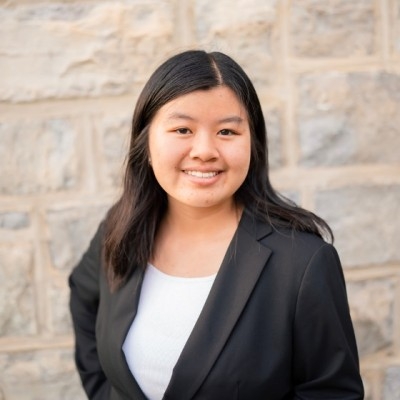Undergraduate Research Projects
The Department of Agricultural and Applied Economics (AAEC) at Virginia Tech offers undergraduate students hands-on research opportunities through experiential learning, connecting classroom knowledge with real-world issues.
Spring 2025 Project: AI and You – Using AI to Answer Agricultural & Applied Economics Questions

While I still followed the baseline of the topics, I definitely catered it more toward veterinary and animal topics. I really enjoyed combining my vet knowledge with economics/agriculture knowledge. This was something I never thought of, as I never thought they could be so intertwined with each other.
The project goal: To simulate a workplace scenario in which a CEO poses a research question to an employee to be answered within a relatively short timeline. Acting as the employee, Hannah Kwan '25 engaged with AI in answering some very topical questions in the area of agricultural and applied economics. This experience aimed to help develop the critical skills needed for success in today’s workforce. Below is the case study for this independent study.
The What: How reliable is AI in answering questions in agricultural and applied economics?
The Why: We all face time and knowledge constraints, making AI a powerful tool for saving time and providing answers to many questions, including those in agricultural and applied economics. However, research suggests that AI-generated answers may not always be reliable and require external knowledge and expertise for refining prompts to get more accurate and informative answers. This independent study examines the extent to which using and interacting with AI can provide useful and accurate answers to questions in the field of agricultural and applied economics.
The What: The study required Hannah to assess two questions using AI tools supplemented with the knowledge obtained through her coursework. The three topics were:
- What is the risk of the weight loss drug, GLP-1, for Chick-Fil-A?
- How tariffs affect the veterinary industry?
- How do owner feeding habits influence obesity in cats?
Outcome: By interacting with George Davis (playing the role of advising consultant) and Greg Estep (playing the role of CEO) and refining prompts through critical thinking based on degree course work and additional research, Hannah iteratively developed and finalized her response to the questions.

- What is the risk of the weight loss drug, GLP-1, for Chick-Fil-A? (Long and short version)
- How tariffs affect the veterinary industry? (Long and short version)
- How do owner feeding habits influence obesity in cats?


